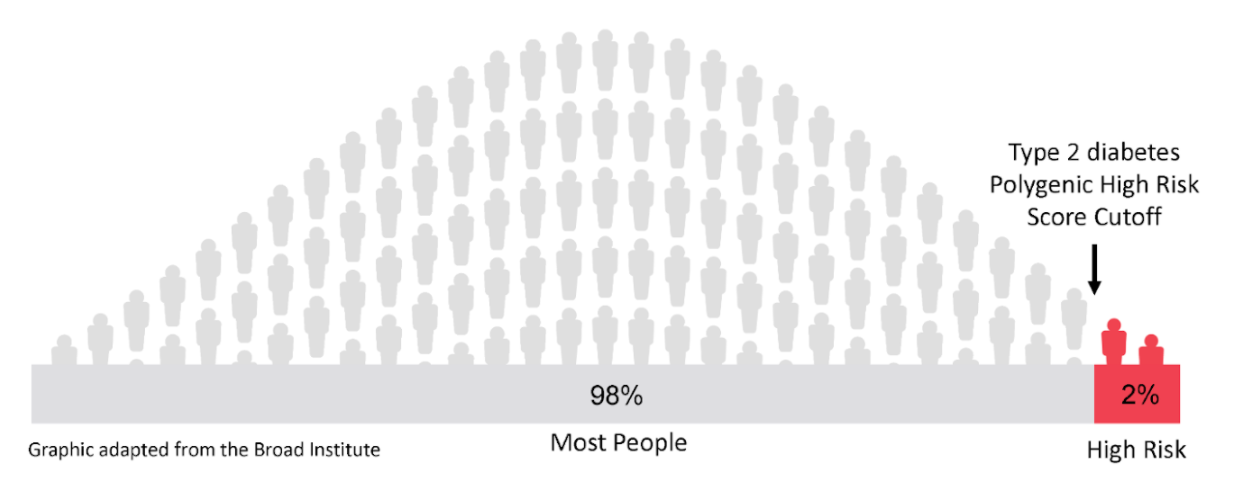Type 2 Diabetes (Adults and Children): Understanding Your Results
What is Type 2 Diabetes?
- Type Type 2 diabetes is a condition where the level of sugar (glucose) in your blood is too high.
- Your blood always has some sugar in it, but too much sugar isn’t good for your health.
- If your blood sugar level remains high over time, it can cause serious damage to your heart, eyes, kidneys, and feet.
- Genetic and lifestyle factors like too little exercise, poor diet and obesity can lead to type 2 diabetes. Risk for developing type 2 diabetes increases with age.
What does high risk for type 2 diabetes mean?
- Your polygenic risk score (PRS) is in the top 2%. This means that you may have a higher risk for type 2 diabetes than 98 out of 100 people.

- On average, 1 in 10 people, or 10%, will get type 2 diabetes in their lifetime. High risk for type 2 diabetes means that your genetic risk is 3-7 times higher for developing type 2 diabetes compared to a person not in the high risk category.
- This result does not mean that you have type 2 diabetes or that you will definitely develop in your lifetime.
- This PRS was created using genetic information from large research studies of people with European, Asian, African, and Hispanic/Latino descent. We outline how this score was created below:
- DNA differences in each population were picked up that are linked to type 2 diabetes risk
- This score was tested using genetic information from other research studies with different populations and was accurate
- DNA differences in each population were picked up that are linked to type 2 diabetes risk
- Larger research studies are needed in people of other descents to provide risk ranges for other populations – see the Broad PRS report attached.
What can you do to lower your risk for type 2 diabetes?
- Not everyone who is at high risk for type 2 diabetes will get it. Talk to your healthcare provider about how to decrease your chances of getting type 2 diabetes. You can lower your risk by:
- Eating healthy foods, including fruits and vegetables, nuts and whole grains
- Keeping your weight in a healthy range
- Aiming for 30 minutes a day of moderate exercise, such as brisk walking or bicycling, at least 5 days a week
- Your doctor may order a blood or urine test to screen for diabetes. Start diabetes screening at age 45, or earlier if you are overweight and:
- You are African American, Hispanic/Latino, Native American, Asian American or Pacific Islander
- Your mother, father, sibling or child has type 2 diabetes
- You were diagnosed with hypertension or heart disease
- You have a lab test that shows low HDL cholesterol (good cholesterol) or high triglycerides
- You do not exercise often
- You are a woman with
- Polycystic ovary syndrome
- A history of gestational diabetes or are pregnant
- Discuss medications and other treatments with your doctor or other healthcare provider.
What are your next steps?
- You should share these results with your doctor(s) or other healthcare provider to discuss
actions to be taken to lower your risk. - You may also want to share your results with your family members.
- Your results will be uploaded to your electronic health record for you to review and will be
available to your doctor(s) and other healthcare providers. - If you have any questions about your results, please contact the study team at your
institution. You can find this contact information on the cover page of the GIRA.
